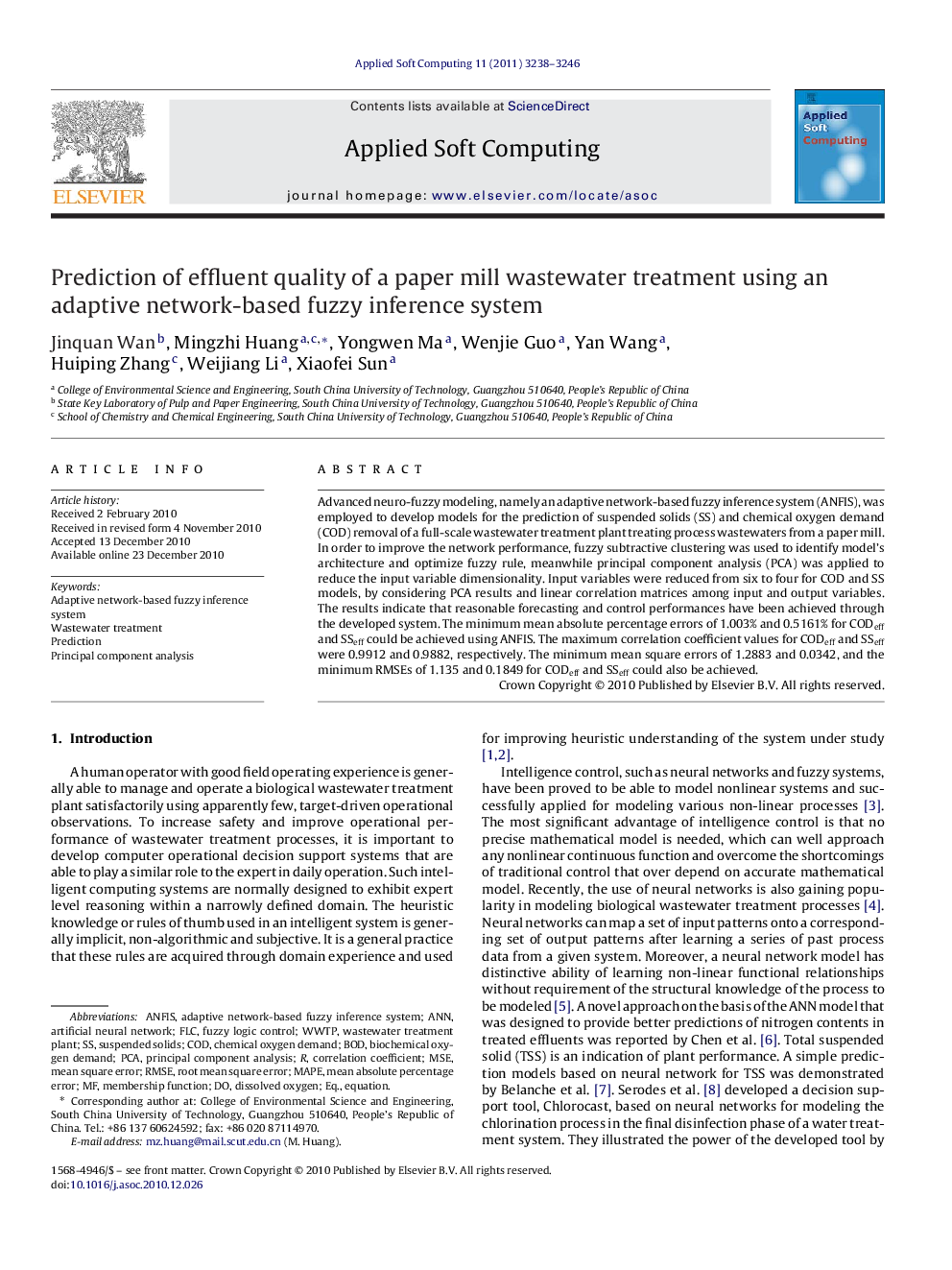| Article ID | Journal | Published Year | Pages | File Type |
|---|---|---|---|---|
| 496757 | Applied Soft Computing | 2011 | 9 Pages |
Advanced neuro-fuzzy modeling, namely an adaptive network-based fuzzy inference system (ANFIS), was employed to develop models for the prediction of suspended solids (SS) and chemical oxygen demand (COD) removal of a full-scale wastewater treatment plant treating process wastewaters from a paper mill. In order to improve the network performance, fuzzy subtractive clustering was used to identify model's architecture and optimize fuzzy rule, meanwhile principal component analysis (PCA) was applied to reduce the input variable dimensionality. Input variables were reduced from six to four for COD and SS models, by considering PCA results and linear correlation matrices among input and output variables. The results indicate that reasonable forecasting and control performances have been achieved through the developed system. The minimum mean absolute percentage errors of 1.003% and 0.5161% for CODeff and SSeff could be achieved using ANFIS. The maximum correlation coefficient values for CODeff and SSeff were 0.9912 and 0.9882, respectively. The minimum mean square errors of 1.2883 and 0.0342, and the minimum RMSEs of 1.135 and 0.1849 for CODeff and SSeff could also be achieved.
